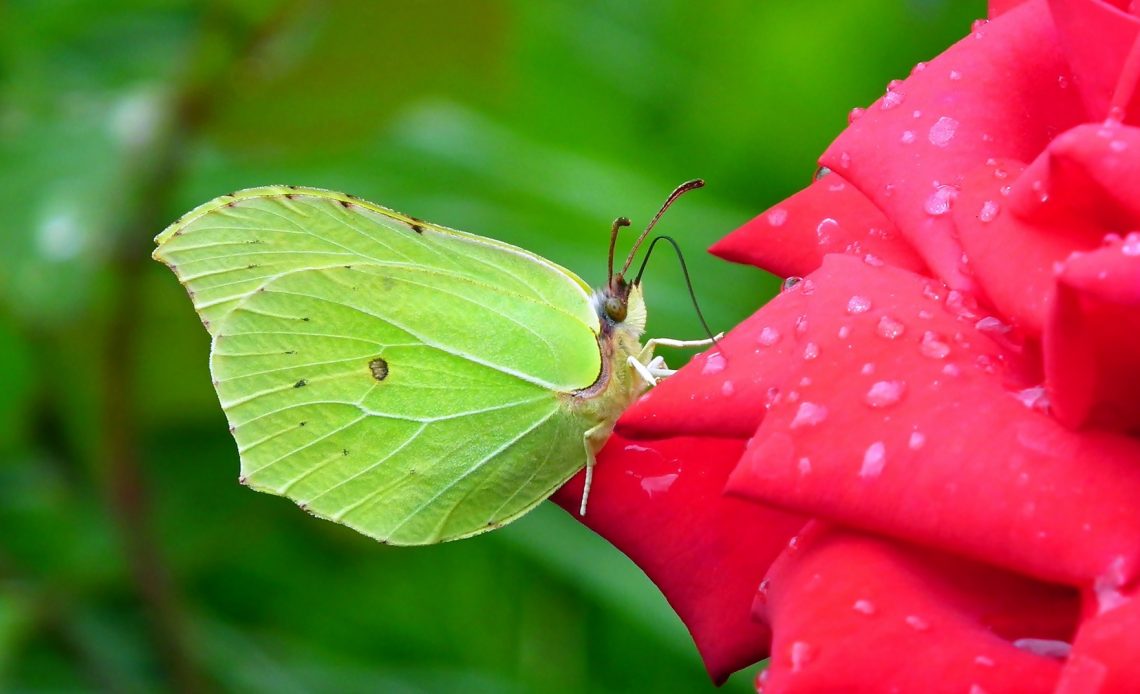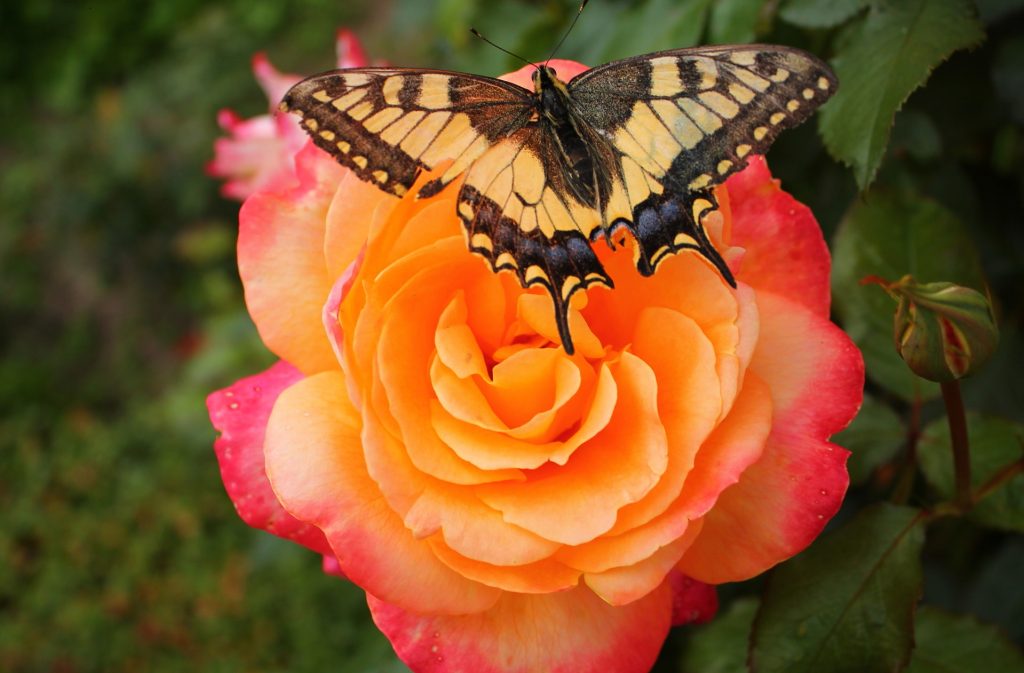

We’re here to help! Wild Yards is a completely free website that is 100% dedicated to helping you create a wildlife-friendly, sustainable yard. Read more
WildYards is reader-supported. When you buy a product through a link on our site, we may earn a comission. Every product is independently selected by our (obsessive) editors and our reviews are unbiased and objective. Read more about our mission or our privacy policy.
Roses are common staples in any garden – they’re some of the most iconic blooms, and they are generally very easy to grow. What’s more, they prove to be firm favorites of pollinators everywhere – but, do butterflies like roses, for example?
Butterflies tend to like visiting roses. They particularly love open blooms with strong scents – however, they can also be found on double-flowered roses in a pinch. Most roses have a reliable amount of nectar and will attract butterflies in color, smell, and shape.
Why do butterflies like roses?
Thanks to their strong colors, roses are sometimes popular with butterflies – bright reds and pinks are always likely to draw their attention. Moreover, given that bees cannot see red at all, they are likely to be exclusive feeding points.
Butterflies are also attracted to sweet scents – and roses are famous for their heady bouquets. Certain roses do not have a scent at all – though that doesn’t mean butterflies will avoid them.
Roses can also attract butterflies as a result of their flattish shape. Butterflies find these flowers easy to land on and feed on, meaning that any plants with more complex shapes are likely to avoid their attention.
Roses will differ in petal compaction from specimen to specimen – meaning those with too many covering the center may not garner much attention. Therefore, if your roses don’t appear too popular with local butterflies, petal arrangements may be the cause.
As roses thrive well in the open sun, butterflies are very likely to spot them. These pollinators normally won’t head for the shade unless they have to. Therefore, it’s likely a good idea to mix roses with other butterfly-attracting plants to help fill out the ranks.
The best roses for attracting butterflies and other pollinators include dog roses, sweet briars, Scottish roses, rosa rugosas, and rosa virginiana.
Do roses attract other insects?
Aphids, whiteflies, thrips, and leafhoppers are just some of the other insects that roses attract. However, these pests are known for causing serious damage to flowers from sucking out the sap from leaves to actually feeding on the plants directly.
Protecting your roses can therefore be a bit of a difficult job. Using pesticides will harm pollinators and plants – so avoid using chemical sprays. Some gardeners choose sprays made of soap and vegetable oil as pest deterrents without the need for chemicals. Pepper spray (literally made from red pepper and dish soap) may also work well.
However, think carefully about spraying plants with anything at all. Pests in your garden, while a nuisance, are still part of your wild ecosystem. Therefore, it’s perhaps worth avoiding spraying anything at all – unless your roses really start to diminish.

Are roses easy to grow?
Roses are famously easy to grow and look beautiful with very little support – which is why gardeners highly prize them.
Providing you plant roses in fertilized soil in a spot where your blooms will get plenty of light, they will normally persist well with regular watering. Avoid planting them too close to other specimens that may compete for nutrients, and keep them out of the wind – roses are famously delicate.
Keeping the soil particularly moist during summer is a must – and you’ll know if roses are thirsty when they start to wilt. When growing roses from scratch in the spring, be sure to water them every two days. You may even choose to provide mulch for your roses to lock in the moisture as much as possible.
Given that there are many different types of rose, their ideal growing zones across the USDA map may vary. Consider growing them in USDA zones seven through nine – with a few species able to grow well in higher zones.
What flowers do butterflies like the most?
Roses compete alongside lantanas, snapdragons, lilacs, and marigolds, which are all perfect for attracting butterflies. They’re all full of nectar, are brightly colored, and thrive in wide-open spaces where pollinators will flutter around.
Butterflies particularly like warm colors, although they will also happily feed on plants displaying purples, blues, and greens.
Butterfly-attracting flowers are also ideal for these insects to drink deeply from. Butterflies have proboscises, which are essentially long tongues. While they can probe deeply, butterflies do not like having to dig too far down for their nectar! Some roses that curl over their centers, especially younger varieties, make them less than ideal for butterflies. They prefer open blooms with easy-to-reach centers, where the nectar is.
As mentioned, flat shapes are ideal for butterfly perching – but they will feed on tubular or trumpet-shaped flowers, too.
Generally speaking, roses aren’t high on the list of flowers that attract butterflies. Connoisseurs usually opt to grow flatter, wider blooms, but roses can still be handy when attracting pollinators. The key is simply planting the right ones (that are open, with easy-to-access nectar, and preferably fragrant).
Keeping regular roses in your garden can still serve their purpose, as long as you grow more attractive flowers for butterflies, such as zinnias and verbenas, nearby.
